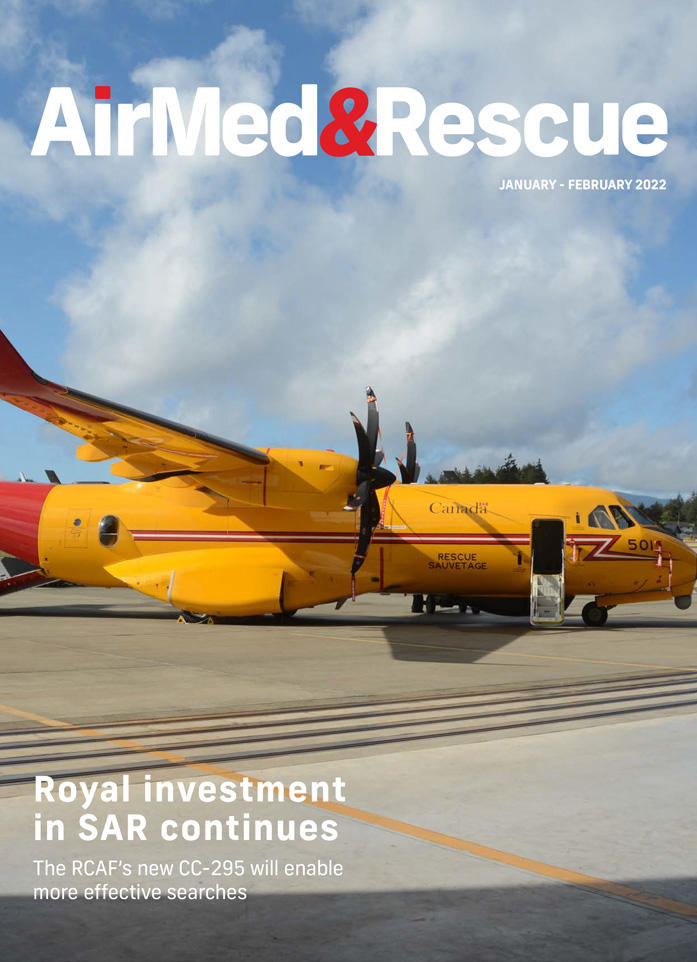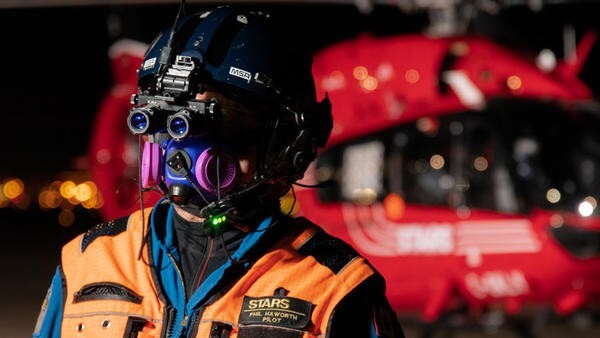Provider Profile: STARS Canada

Accessing healthcare in emergencies is an ongoing issue for rural populations around the world, and it’s no different in Canada. Clara Bullock spoke to STARS Founder, President and CEO Andrea Robertson about how helicopter air ambulance services are tackling the issue
In the early 1980s, studies showed about half the deaths due to trauma could have been prevented if patients had received critical care sooner. When Dr Greg Powell lost a young mother who was being transported from a rural area to Calgary by ground ambulance, he decided something had to change. That’s when he founded the air ambulance service STARS.
Less than half the population of Western Canada lives in major urban centers and has access to critical care within minutes. For the rest, such access is measured in hours. That can mean the difference between life and death, full recovery, or permanent damage.
“With STARS, those living in rural communities, working in remote areas, traveling on highways or being transported from community hospitals to major medical centres, receive the very best in critical care via helicopters staffed and outfitted as mobile ICUs,” said Andrea Robertson. “In 1985, our fight for life began with a single idea – that one life lost is one too many. When the first STARS helicopter took flight, we weren’t just offering hope to the hopeless, we began radically changing the way critical care was delivered.”
Now, the service is in use all the time: 1,436 missions were flown during the 2020-21 fiscal year from the bases in Calgary, Edmonton and Grande Prairie and include missions to British Colombia communities. Missions may have been scene calls in the area closest to those communities.
On call 24/7/365
Members of the STARS air medical crew are on call at each base 24 hours a day, seven days a week, and are in the air approximately 10 minutes after accepting a call. Many of the paramedics and nurses hold part or full-time positions with high performance advanced life support emergency medical services (EMS) and major hospital critical care departments including emergency, intensive care, and cardiac care units.
The service’s transport physicians provide online medical control oversight during all missions and participate as a flight crew member on approximately five per cent of patient transports. Occasionally, the STARS helicopter is used to transport specialty teams to assist unique patient populations. To ensure the greatest level of safety on each STARS mission, two pilots – a captain and a first officer – are required to fly the helicopter. Pilots are on call at each base 365 days a year.
STARS captains have a minimum of 3,000 flying hours and a minimum of 300 hours of instrument flight rules experience (flying at night or during low visibility conditions by using their cockpit instruments). They also have 100 hours of STARS flight experience, hold an Airline Transport Rating and an Instrument Flying License.
In-house maintenance
STARS aircraft engineers perform aircraft maintenance and servicing aircraft modification and development, night vision imaging system development and emergency medical interior design and development.
STARS currently operates a fleet of Airbus H145 and BK117 helicopters, which have been specially outfitted for helicopter EMS operations. At any given time, one helicopter is the primary, in-service aircraft at each of our bases and is available to respond to missions. During their years in service, our AW139s flew more than 8,880 hours and 5,300 missions combined, helping to save thousands of lives.
Training for medical and flight crews
In 2003, STARS became the first civilian air carrier to use night vision goggle (NVG) technology in Canada. Today, they continue to use the technology to enable safer flights for crews, especially in mountainous terrain, which was previously inaccessible. Flight crews at all six STARS bases are trained in the use of NVGs, and the training doesn’t end there. “STARS is committed to providing continuing education and professional development opportunities for our partners in the chain of survival,” said Robertson.
The service also runs the STARS Emergency Link Centre (ELC), a 24-hour emergency medical communications center that offers timely information to emergency service providers for critically ill and injured patients as well as a range of services for industry partners.
The STARS Emergency Link Centre (ELC) was established in 1996 to meet the needs of industry working in remote locations. The STARS VIGILANT Emergency Communications Centre was established in 2008 to provide efficient activation of emergency response plans. Today, STARS VIGILANT services are used by various industries, including oil and gas, forestry, mining, road maintenance, social services, education and transportation.
In Alberta and Saskatchewan, the STARS ELC oversees STARS helicopter missions, coordinates transport and care for critically ill and injured patients and facilitates online medical consultations. When seconds count and the mission is critical, timely and accurate sharing of information is vital to the patient’s outcome. To meet this need, the STARS Emergency Link Centre (ELC) is staffed 24 hours a day, seven days a week, by a team of Communication Specialists.
“As we’ve grown and evolved, STARS has never wavered from our mission,” said Robertson. “Fundamentally, we all believe that where you live – or work, play and travel – shouldn’t impact your chance of survival. Our strategy focuses on three core groups that are integral to our fight to save lives: patients, crew and allies.”
ABOUT STARS
Simply put, STARS fights for life. Since we embarked on our first mission in 1985, we’ve been driven by the goal of providing people the vital care they need when they need it the most. Whether it’s offering hands-on training to rural medical providers or providing rapid, emergency medical transportation for the critically ill and injured, we operate 24/7 from bases in Calgary, Edmonton, Grande Prairie, Regina, Saskatoon and Winnipeg, anticipating and acting when people need our help.
Learn more at STARS.CA

January 2022
Issue
The latest medical equipment carried onboard HEMS and fixed-wing air ambulances that is making a difference to patient outcomes; sensor technology that is changing the SAR sector; medical transport billing; facing grief and trauma as a first responder; and drone swarms enhancing SAR provision.
Clara Bullock
Clara Bullock is a writer for ITIJ and AirMed&Rescue. Initially a freelance writer for publications ranging from gardening news to music magazines, she has made the transition to writing about the ins and outs of travel insurance and aeromedicine. In her spare time she reviews books on Instagram and eats pasta.




